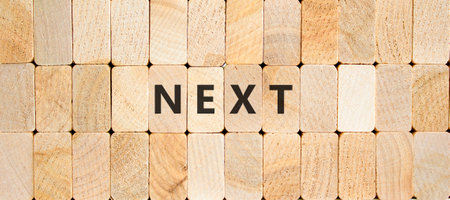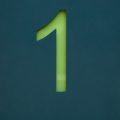Introduction to Tarot in American Culture
Tarot cards have become a familiar sight across the United States, whether at bustling street fairs, on popular social media platforms, or even in modern wellness spaces. Once shrouded in mystery and often misunderstood, Tarot is experiencing a cultural renaissance that goes far beyond old stereotypes of fortune-telling. Today, Americans from all walks of life are turning to Tarot for a wide range of reasons—from personal growth and self-reflection to fun gatherings with friends.
Understanding Tarot’s Popularity
The appeal of Tarot in America is growing rapidly. In the past, many people viewed Tarot strictly as a tool for predicting the future, but now it’s recognized as much more versatile. Here are some key ways Americans use Tarot today:
| Use | Description |
|---|---|
| Self-Reflection | Many use Tarot to gain insight into their own thoughts and emotions, helping them make decisions or understand life events. |
| Entertainment | Tarot readings are a popular party activity and ice-breaker at social gatherings. |
| Wellness & Mindfulness | Some incorporate Tarot into meditation or journaling routines as a tool for mindfulness and focus. |
| Cultural Exploration | Tarot sparks curiosity about symbolism, history, and art across different cultures. |
Dispelling Common Myths About Tarot
A few persistent myths still surround Tarot in America. It’s important to clear up these misunderstandings so more people can appreciate what Tarot really offers:
- Myth: Tarot predicts the future with certainty.
Fact: Most readers see Tarot as a way to explore possibilities, not fixed outcomes. - Myth: You must have “psychic powers” to read Tarot.
Fact: Anyone can learn the basics of reading Tarot through practice and study. - Myth: Tarot is tied only to occult or mystical practices.
Fact: While its history includes mystical elements, modern uses are diverse and often focused on self-improvement or entertainment.
The Diversity of Reading Styles
No two Tarot readings are exactly alike. In the U.S., readers come from many backgrounds and bring their own approaches—some stick to traditional meanings while others take a creative or intuitive path. This diversity means that everyone can find a style that fits their needs, whether they’re seeking deep personal insights or just looking for a new way to connect with friends.
2. Card Structure: The Roadmap of Tarot
Understanding the structure of a Tarot deck is like learning the layout of a city before you start exploring its neighborhoods. Every card, suit, and symbol has its own place and purpose, guiding readers through the story each spread tells. In this section, we’ll break down the basic anatomy of Tarot decks and see how their structure shapes interpretation styles.
Major Arcana: Life’s Big Lessons
The Major Arcana consists of 22 cards, often seen as the “headline events” or key milestones in life’s journey. These cards—like The Fool, The Lovers, or The World—deal with universal themes and spiritual lessons that shape personal growth. When a Major Arcana card appears in a reading, it usually points to significant life changes or important turning points.
Examples of Major Arcana Cards
| Card Name | Theme | Common Meaning |
|---|---|---|
| The Fool | Beginnings | A fresh start or taking a leap of faith |
| The Lovers | Relationships | Choices about love, partnership, or values |
| The Tower | Upheaval | Sudden change or awakening |
| The World | Completion | Achievement, fulfillment, wholeness |
Minor Arcana: Everyday Experiences
The Minor Arcana is made up of 56 cards divided into four suits: Cups, Pentacles, Swords, and Wands. Think of these as the everyday moments and challenges that fill in the details between life’s big milestones. Each suit represents different aspects of daily life and emotions.
Suits and Their Symbolism
| Suit | Element | Main Focus/Keywords | Example Card Meaning |
|---|---|---|---|
| Cups | Water | Emotions, relationships, intuition | Ace of Cups: New emotional beginnings or offers of love |
| Pentacles (Coins) | Earth | Finances, work, material matters | Four of Pentacles: Holding on to resources or stability |
| Swords | Air | Thoughts, communication, conflict | Knight of Swords: Bold action or sudden communication |
| Wands | Fire | Passion, energy, creativity | Three of Wands: Planning ahead or waiting for results |
The Framework for Interpretation: Why Structure Matters
This clear structure—Major vs. Minor Arcana and the symbolism within each suit—gives Tarot readings a built-in roadmap. It helps both readers and clients understand which areas of life are being highlighted. For example, a spread full of Pentacles might suggest career or financial issues are front and center, while many Cups hint at relationship themes. By recognizing these patterns in the deck’s design, interpretations become more focused and consistent across different reading styles.
Tying It Together with Reading Styles
Differing reading styles may emphasize various parts of this structure. Some readers lean heavily on symbolic meanings rooted in tradition; others focus on intuitive impressions based on card positions or combinations. No matter the approach, understanding how the Tarot deck is organized gives every reading clarity and depth—making the mystical feel a bit more manageable for everyone involved.
![]()
3. Interpreting the Cards: Tradition Meets Intuition
Tarot reading is a blend of structure and personal insight, which makes every session unique. The foundation of tarot lies in traditional card meanings—those tried-and-true interpretations passed down through generations. Yet, just as important is the reader’s intuition, which brings each spread to life in a way that speaks to the question at hand. In the United States, many readers appreciate this balance because it allows for both cultural tradition and individual freedom of expression.
How Structure Guides Interpretation
Every tarot deck has a built-in structure, usually made up of 78 cards divided into the Major and Minor Arcana. Each card comes with classic meanings, symbolism, and associations. For example, the Death card traditionally points to transformation or endings, while the Ace of Cups is tied to new emotional beginnings. This structure acts like a roadmap for readers—it keeps interpretations grounded and ensures consistency across different readings and readers.
| Card | Traditional Meaning | Intuitive Twist |
|---|---|---|
| The Fool | New beginnings, risk-taking | A leap of faith in a career move or relationship based on your gut feeling |
| The Tower | Sudden change, upheaval | An unexpected event that feels negative but opens doors for positive change you sense coming |
| Three of Swords | Pain, heartbreak | Healing from past wounds with self-care strategies that feel right for you now |
| Queen of Pentacles | Nurturing, practicality | A reminder to balance work and home life as your own situation demands |
The Role of Intuition in Tarot Readings
While structure provides a strong backbone, American tarot readers often lean into their intuition during readings. This can mean picking up on subtle cues from the person being read for or noticing how certain cards “feel” in the moment. Intuition helps tailor each reading to the individual rather than sticking rigidly to textbook definitions. For some, this might involve drawing connections between cards based on current events or personal experiences; for others, it might include insights that simply “come up” during a session.
When Tradition Meets Personal Insight
The magic happens when tradition and intuition work together. Structure offers clarity—a set of meanings everyone can start from—but it doesn’t confine or limit the possibilities. Instead, it gives readers a base to grow from, encouraging them to use their inner voice to adapt meanings as needed for each unique situation.
Balancing Both Approaches in Practice
For those new to tarot or looking to deepen their practice, here are simple ways to find balance:
- Start by learning traditional card meanings as your foundation.
- During readings, pay attention to thoughts or feelings that arise—your intuition matters.
- If something about a card stands out (a symbol or color), trust your impression even if it’s not in the guidebook.
- Use structure as a guide but don’t be afraid to let your personal insight shine through.
- Remember: There’s no single “right” way—every reading is a conversation between structure and spirit.
4. Popular Reading Styles in the US
When it comes to Tarot reading in America, several distinct styles have become especially popular, each influenced by how much structure they use and the kinds of questions they address. Understanding these methods helps us see how the organization of a spread can shape the interpretation and overall reading experience.
Celtic Cross Spread
The Celtic Cross is one of the most recognized spreads in American Tarot circles. It uses ten cards, each assigned a specific position with its own meaning—such as “the present,” “challenges,” “the past,” and so on. This high degree of structure makes it ideal for deep dives into complex situations or life events. Readers often rely on this spread when clients want a thorough overview, as every card’s spot is predetermined and interconnected.
How Structure Influences the Celtic Cross
| Position | Focus | Interpretation Influence |
|---|---|---|
| Card 1 (Present) | Current situation | Sets the context for the whole reading |
| Card 2 (Challenge) | Main obstacle | Highlights what needs attention |
| Card 3 (Past) | Recent influences | Puts issues into perspective |
Three-Card Spread
This straightforward method is favored for its simplicity and flexibility. In the US, it’s commonly used to explore “past, present, future,” but readers often adapt it to represent other aspects like “situation, action, outcome” or “mind, body, spirit.” The three-card spread balances some structure (set card meanings) with room for creative interpretation.
How Structure Influences Three-Card Spreads
| Card Number | Typical Focus | Impact on Reading Style |
|---|---|---|
| 1 | Past/Situation/Mind | Provides background or context |
| 2 | Present/Action/Body | Shows current factors or advice |
| 3 | Future/Outcome/Spirit | Sheds light on potential results or guidance |
Free-Form and Intuitive Approaches
Some American readers prefer less structured styles, drawing cards as they feel guided rather than following a set pattern. These free-form readings allow for maximum flexibility and intuition. Rather than focusing on assigned card positions, readers interpret messages based on patterns, feelings, or themes that emerge in the moment.
How Structure (or Lack Thereof) Shapes Free-Form Readings
- No fixed positions—cards are laid out as needed based on the flow of conversation or intuition.
- The meaning of each card may shift depending on its relationship to others drawn during the session.
- This approach can feel more personal and spontaneous but may be less focused without clear guidelines.
A Quick Comparison of US Tarot Reading Styles
| Style | Level of Structure | Main Advantage |
|---|---|---|
| Celtic Cross | Highly Structured | Dives deep into complex issues with clear roles for each card. |
| Three-Card Spread | Semi-Structured | Simple, versatile, good for quick insights. |
| Free-Form/Intuitive | Unstructured | Makes room for creativity and personalized messages. |
The style you choose can influence not only how you interpret the cards but also how you connect with your querent and their questions. Whether you’re drawn to tradition or prefer to go with your gut, understanding these popular American approaches can help you find your own best fit within Tarot practice.
5. The Influence of Structure on Reader-Client Dynamics
In the world of tarot, structure isnt just about card placement or following a set spread—its also about how the reading experience unfolds between the reader and the client. In the U.S., where personal agency, healthy skepticism, and empowerment are highly valued, a structured approach can make all the difference in building trust and creating a positive, collaborative atmosphere.
How Structure Builds Rapport and Trust
A clear structure gives both the reader and the client a roadmap for the session. When a tarot reader explains their process upfront—like which spread they’ll use or how they interpret reversals—it helps clients feel informed and respected. This transparency is key to establishing credibility. For many Americans, knowing what to expect reduces anxiety and opens up space for authentic conversation.
Ways Structured Readings Foster Connection
| Structured Element | Effect on Client | Cultural Tie-In |
|---|---|---|
| Clear Explanation of Process | Makes clients feel included and respected | Aligns with value on transparency and fairness |
| Step-by-Step Card Interpretation | Helps clients follow along, encourages engagement | Supports American ideals of education and self-reliance |
| Encouraging Questions Throughout | Builds rapport, makes reading collaborative | Reflects conversational norms and open dialogue |
| Defined Session Boundaries (time, topics) | Makes clients feel safe and in control | Ties to respect for personal boundaries and autonomy |
The Role of Agency, Skepticism, and Empowerment in American Tarot Culture
Americans often approach tarot with curiosity but also a fair bit of skepticism. They want readings that empower them rather than tell them what to do. A structured approach acknowledges these values by framing tarot as a tool for reflection—not fate carved in stone. When readers invite clients to participate in interpreting cards or deciding which spreads to use, it reinforces the clients sense of agency.
Practical Tips for Structured, Empowering Tarot Sessions
- Invite Input: Ask clients if they have specific questions or areas of life they want to explore.
- Explain Each Step: Walk through your process aloud so clients know what’s happening.
- Encourage Dialogue: Let clients share their thoughts about card meanings—don’t just lecture.
- Acknowledge Skepticism: Normalize doubt; explain that tarot offers possibilities, not guarantees.
- Focus on Empowerment: Frame insights as options and potential paths forward, supporting self-determination.
The Bottom Line: Structure Supports Connection
A well-structured tarot reading isn’t rigid—it’s supportive. By providing clarity, inviting participation, and respecting American values around independence and critical thinking, tarot readers can create sessions where trust flourishes and clients leave feeling heard, empowered, and inspired.
6. Bridging Tradition and Modernity: Adapting Tarot for Today
Tarot’s roots run deep, drawing from centuries-old traditions, symbolism, and established spreads. Yet, today’s readers are finding creative ways to keep Tarot fresh and relevant in our fast-paced, diverse world. Let’s explore how modern practitioners blend time-honored frameworks with new technology, cultural shifts, and a more inclusive mindset to make Tarot accessible to everyone.
Honoring the Old While Welcoming the New
Many American Tarot readers still use classic decks like the Rider-Waite-Smith or Thoth as their foundation. However, they don’t stop there—modern readers often reinterpret traditional meanings or mix in newer decks that reflect contemporary themes, such as LGBTQ+ representation, social justice issues, or multicultural art styles. This flexible approach allows Tarot to speak to a wider range of people and experiences.
Traditional vs. Modern Approaches
| Traditional Tarot | Modern Adaptations |
|---|---|
| Classic symbolism (e.g., medieval imagery) | Inclusive art reflecting diverse identities |
| Fixed card meanings based on historical texts | Personalized interpretations and intuitive reading |
| Face-to-face readings with physical cards | Online readings via video calls, apps, or social media |
| Focus on fate and destiny narratives | Emphasis on personal growth and self-reflection |
The Role of Technology in Modern Tarot
The digital age has made Tarot more accessible than ever. Mobile apps allow users to draw daily cards or receive instant readings. Virtual communities on platforms like Instagram, TikTok, and YouTube host live readings, deck reviews, and educational content. These tools not only make Tarot available to those who may not have access to physical cards but also foster a sense of community among enthusiasts across the country.
Popular Tech Tools for Tarot Readers in the U.S.
- Mobile Apps: Apps like Labyrinthos or Golden Thread Tarot provide digital decks, journaling features, and learning resources.
- YouTube Channels: Many readers offer free general readings or teach spread techniques.
- Social Media: Hashtags like #TarotCommunity connect people for card pulls, challenges, and discussions.
- Online Booking: Websites streamline scheduling for professional readings over Zoom or phone.
Cultural Awareness and Inclusivity in Tarot Practice
The American melting pot encourages readers to be mindful of different backgrounds and belief systems. Today’s Tarot embraces respectful language and considers various cultural perspectives when interpreting cards. Many modern guidebooks discuss how to avoid stereotypes or outdated archetypes, ensuring that clients feel seen and heard regardless of their background.
A Few Ways Readers Foster Inclusivity:
- Selecting decks with diverse imagery (race, gender identity, body types)
- Avoiding culturally insensitive symbols or terminology
- Offering readings in multiple languages or using plain English for accessibility
- Treating each reading as a unique experience shaped by the client’s worldview
The Evolving Landscape of Tarot Reading Styles
No two readers interpret cards exactly alike—and that’s part of what makes modern Tarot so dynamic! Some focus heavily on traditional symbolism; others use intuition or even combine Tarot with astrology or numerology. The rise of coaching-style readings—where the cards become tools for self-empowerment rather than fortune-telling—is especially popular in the U.S., aligning with broader trends toward wellness and self-care.


